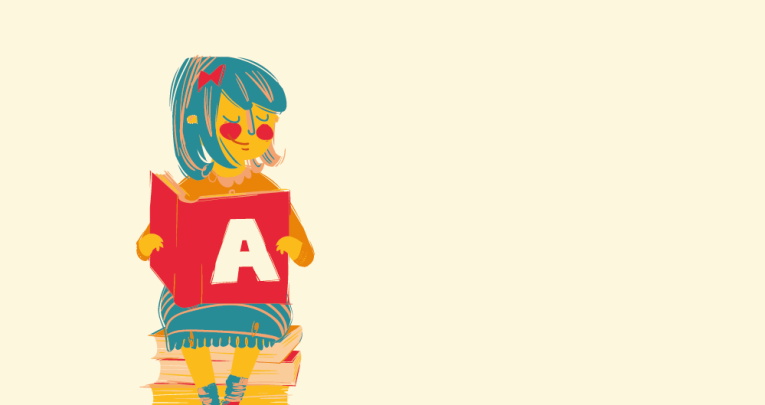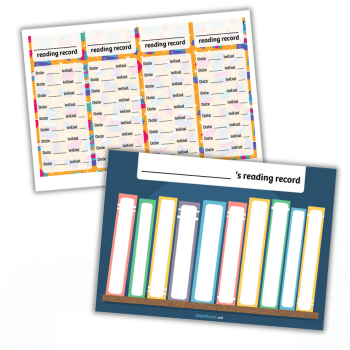Ditch your school Reading Records and try these ideas instead

What’s the point of a reading diary if it puts children and parents off reading? Surely there’s a better way, says James Clements…

Ah, reading diaries. A reliable fixture of the primary school classroom and the building blocks of an institution that’s loved by parents and teachers alike. Or are they?
For every parent who is happy to provide a page-long essay describing their child’s nightly reading in minute detail, there is another who suddenly realises that it is 9pm Sunday evening and there are now five days of comments to fill in.
For every teacher who values the window these diaries offers into a child’s wider reading, there is another who winces at the sight of 22 books awaiting comment (plus, naturally, another six to chase up and a further two that haven’t been seen for several weeks).
At their best, reading diaries can be a useful record of a child’s reading – a reliable means of communication between home and school. But the traditional model can bring challenges.
For the youngest children, where the emphasis is on parents to fill them in, there are two issues. Firstly, for some parents, completing the reading diary becomes a badge of honour.
Secondly, whether because of issues with their own literacy or trouble finding the time, some parents face a genuine struggle with the task.
This means that the conversations between school and home aren’t about the positives of reading or the joy of books – instead, they concern the reading diary itself and why it isn’t up-to-date.
For children who are mature enough to complete their own diary, it can come to be seen as punishment; we extol the virtues of reading to children not just because of the educational benefits, but because reading is a wonderful, pleasurable way to spend their time.
Then we ask them to complete a piece of writing about it. Most other pleasurable leisure activities – television, computer games, sports or after-school clubs, for example – aren’t immediately followed by a piece of writing.
Following reading with writing reinforces the message that this is school business, rather than something valuable and enjoyable in its own right.
On my travels to visit wonderful reading schools across the UK, I encounter more and more places that, conscious of these challenges, have moved away from keeping reading diaries in their traditional form.
Here are some of the best alternatives I’ve discovered.
1 | Create a reading tree
A display board with a bare tree ready to be covered in leaves can function as an effective whole-class reading record. Each time a child completes a book, they add a leaf with their name and the book, building into a wonderful display.
Adding a leaf to the tree can be a motivating reason to read. For younger children, parents can fill out a leaf when they hear their child read at home (in the same way as they would fill out a traditional reading diary). And at the end of the year, the display can be dismantled and the children reunited with the leaves detailing all of the books they’ve read.
This can be an incredibly enjoyable session, with children gasping aloud at how much they’ve achieved and excitedly recalling their favourites.
2 | Provide real reading journals
Many reading records or diaries are referred to as journals, but how many actually are journals? How many children have a space to respond in the way they want to the books they read, without having a set format or structure to follow?
Rather than a reading diary that only has space for writing, some schools are moving to a model where there is room for pictures, diagrams, cuttings, as well as the written word. It’s somewhere for them to record their personal reading lives.
3 | Make time to talk about books
One of the best ways of building a genuine reading culture is to allow children to talk about their reading. Building in regular time for children to share with each other the books they have (and perhaps haven’t) enjoyed can create a buzz about books and help children to develop the literary language that is so useful as they move through school.
Two questions
My best advice when thinking about the use of reading journals would be the same as it is for any other activity linked to reading, whether it is book corners, displays, dressing up events, or reading competitions. I would suggest teachers always ask two questions:
- Is this going to make anyone better at reading?
- Is this likely to help anyone develop a more positive attitude to reading?
If the answer is anything less than a resounding ‘yes’, then we should give serious thought as to whether it is worth us expending our valuable time and energy.
Like every tool we have at our disposal in the classroom, reading diaries will be what we make of them. Used well, they can be wonderful. Used without thought, they become another thing to do, hoovering up valuable teacher time. And like everything we do in school, we have the power to change this if we wish.
Ditch the diary
Four alternative ways to keep a record of children’s reading:
- Make your bookmark
Use a simple bookmark with spaces for a parent to add their initials each time they hear a child read over the week. This gives the teacher a handy overview of reading and means there is no lengthy writing for the parent who is busy or who struggles to record a comment. Download one for free here.
Download this sheet featuring a drawing of a bookshelf. The spines have been left blank for children to record the names of the books they’ve read.
A quick photo is taken of the child holding up the book they’ve finished. This is saved in the class’s shared area, building into a gallery of each child’s reading that year. Photos of favourite books can be shared in an electronic photo frame, giving a quick way of making class recommendations.
A quick search online will throw up a plethora of commercial software packages, but setting up a template on Word or Google Docs and hosting it on the class shared area is quick and easy (again, search online for handy how-to tutorials), and it’s free.
James Clements is an education writer and researcher. He is lucky enough to spend most of his time visiting schools trying to find out what makes great English teaching. Follow him on Twitter at @MrJClements.












